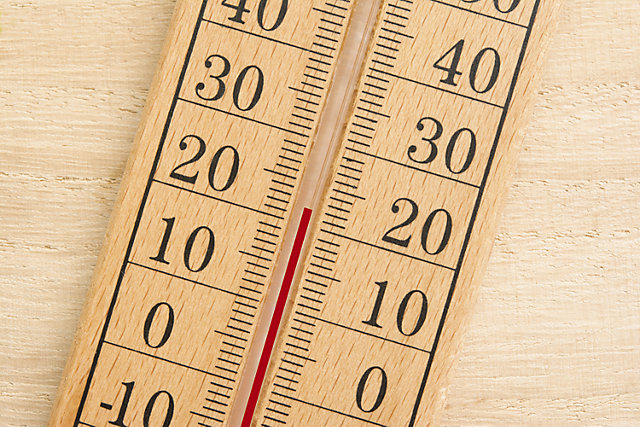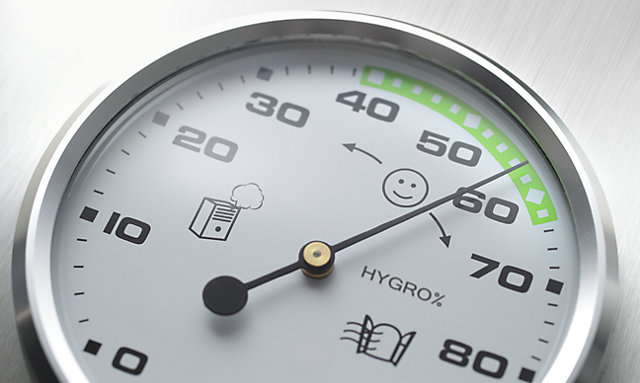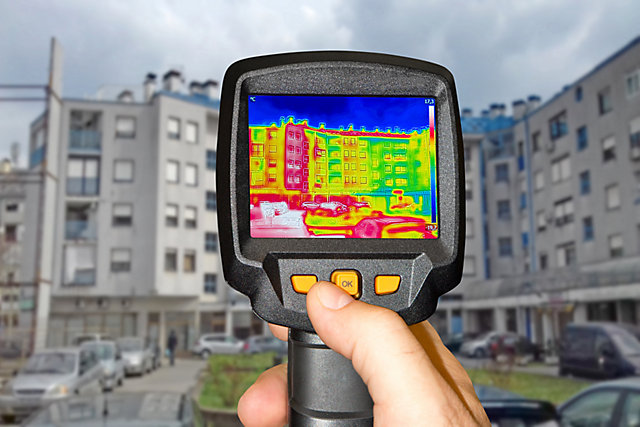
Requirements for the workplace
Air as a health factor.
Are you one of those people who is always freezing cold in the office and secretly turns the heating up a notch in winter? Or are you one of those who sits in a meeting wearing a short-sleeved shirt even when it's below zero outside? Different people have a different perception of how cold or warm it is in a room.
There's plenty of research on the topic of how to configure a working environment that is healthy and in which all employees can work productively. Indoor climate is an important aspect of workplace ergonomics. Along with lighting, noise, vibrations, radiation and electromagnetic fields, it is one of the physical factors of a working environment.
In this article, we have collected key facts about air at the workplace:
- Components of the indoor climate
- Workplace Ordinance: Air
- Health and poor air
- Sick building syndrome
- Analysing the indoor climate
- Improving the indoor climate
Workplace design: which factors determine what the air is like?
Indoor climate, as an ambient factor, is determined by the following variables:
1. Physical parameter
The physical components of the indoor climate are based on measurable parameters. Nevertheless, caution is advised when taking measurements, because the individual variables can impact each other, and therefore produce different results when different measuring devices are used.
- Air temperature
Air temperature is the temperature of the air in a room. This does not take the effect of heat radiation into account. Humidity and the speed at which air moves influence our perception of the air temperature: air moving at a higher speed makes the air seem cooler, while high humidity makes the air seem warmer. The term room temperature includes the heat radiation from the walls and other sources of heat. - Humidity
A distinction is made between absolute and relative humidity. Absolute humidity refers to the amount of water vapour in the air (g/m3). Relative humidity refers to the degree to which the air is saturated with water vapour as a percentage. Many people experience warm and very humid air as mugginess. - Air speed
This parameter indicates the level to which the air is in motion. If the speed at which air moves is too high, then we talk about draughts; if the speed at which the air is moving is very low, many people have the feeling that the air is “stifling”. - Heat radiation
Heat radiation is emitted by heat sources in our immediate environment (people, machines, solar radiation, outside air). Our body can only distinguish between air temperature and heat radiation to a limited extent.
2. Personal factors
Circumstances unique to the specific situation influence how the aforementioned physical parameters are perceived. These include the activity being performed, the clothing worn by the respective person, whether the room is air conditioned, or individual factors such as age, gender, health of the employee.
3. Air quality
The quality of the air in the workplace is also affected by the components that originate from people, such as CO2. Assessing air quality also involves measuring parameters such as carbon dioxide concentration and the air exchange rate. The latter means the intervals in which “fresh air” is supplied to a room using ventilation.
However, air quality also refers to exposure to fine dust, nicotine or mould and hazardous substances used in production, for example.
Workplace Ordinance: the optimal indoor climate in the office.
Different people have a different perception of indoor climate parameters; personal comfort varies. The following values provide an overview:
Room temperature
The optimal room temperature depends on how demanding the activity is, and ranges from +20 °C for light physical activities while sitting (e.g. working at a computer), to +12 °C for heavy physical activities while standing or walking (e.g. carrying loads).
If the outside temperature exceeds +26 °C, additional measures must be taken. These include, for example, providing suitable drinks or setting up sun shades and ventilation equipment.
You can find more information in our Purchasing guide to fans.


Humidity
Depending on the room temperature, the relative humidity should be between 55% at +26 °C and 80% at +20 °C.
Everything for the right temperature in the office and workshop
Air speed
There must be no unhealthy draughts in the area in which people are working. Whether there are draughts or not depends on the air temperature, the air speed, the degree of turbulence, and the type of activity.
The following conditions are generally referred to as a pleasant air conditions: an air temperature of +20 °C, degree of turbulence of 40%, and an average air velocity off less than 0.15 m/s combined with light physical activities.


Air quality
- Concentrations of CO2 must not exceed 1000 ppm.
- According to the Non-Smokers' Protection Act, tobacco smoke must not present a health risk to non-smoking employees.
- To ensure good air quality, a sufficient supply of air supply must be available. This can be done using ventilation and air conditioning systems (air filters, air conditioning) or free ventilation (outside air).
- Airing out the room is recommended every 60 minutes in the office and every 20 minutes in the meeting room. The windows should be kept fully open for 3 minutes in winter and up to 10 minutes in summer.
Heat radiation
Any build-up of heat is to be reduced by means of ventilation and sun shades on the windows. The room temperature is used as the reference point.
Please note: special regulations may apply to cleanrooms in industry and production.

Health problems due to poor air.
The values at the majority of people feel comfortable in an enclosed space are referred to as the “comfort range”. When conditions are poor, people can be plagued by a variety of symptoms.
Heat
Excessively high temperatures in the work area lead to dehydration, headaches and impaired productivity.
Cold
Severe cold causes muscle tension, shivering, increased susceptibility to pathogens and a decrease in productivity.
Low humidity
Very dry air causes irritation or inflammation of the eyes and the respiratory tract, and can potentially impact the lungs. Mucous membranes that have dried out become permeable to pathogens, increasing the risk of infection. Over the long term, skin can become cracked, which leads to itching and can aggravate any chronic, already existing skin diseases, such as neurodermatitis or psoriasis.
High humidity
High relative humidity in combination with low temperatures promotes the growth of mould. Mould spores are bad for the respiratory tract and can result in breathing problems, especially for asthmatics and allergy sufferers.
Draughts
Draughts can be caused by too much air coming in from outside, or by indoor air conditioning systems. Unhealthy draughts dry out the eyes. Cold draughts in particular often cause neck stiffness.
Low oxygen-air
If the air speed is insufficient and there is a lack of fresh air (high carbon dioxide content), breathing may become difficult and the ability to concentrate may suffer.
Unpleasant smells
General malaise, impaired productivity.
Exposure to pollutants or hazardous substances
Air that contains chemical or biological substances can result in a variety of serious health problems and ailments.
What is sick building syndrome?
Sick building syndrome (SBS) describes a series of symptoms of an illness that occurs in people who work in one and the same building. The employees frequently suffer from highly variable symptoms, such as headaches and itchy eyes or skin. Once the people affected leave the workplace, the complaints usually abate.
The cause of the symptoms of SBS cannot be determined precisely. Psychological and social stress factors can also play a role.
SBS must be differentiated from “Building Related Illness” (BRI), in which the symptoms that the person affected is suffering from are clearly due to an exposure to allergens, microbes or chemicals in the building.
Are you worried that your employees are suffering from SBS? If you are, then carrying out a room climate analysis might be a good idea.
How do you carry out an indoor climate analysis?
We recommend conducting any test of the indoor climate in two steps.
Indoor climate monitoring
These are fundamental parameters that are easy to identify.
Indoor climate analysis
For an in-depth analysis of the impact of different influences on each other, special expertise is needed. A detailed analysis by an expert will bring benefits at workplaces with many different heat sources, for example, high humidity, or in which the air moves at high speeds.
Please note: there are components of the indoor environment that are not factored into these types of analyses. These include, for example, the air quality when hazardous substances or biological agents are used. These factors must be examined within the course of a risk assessment.
How do you ensure the ideal air conditions?
The following tips will help you to regulate the indoor climate in the workplace:
- Heat stress can be reduced by using fans and sun shades.
- When it is cold, you should counteract this by using heaters or heated floor mats.
- Indoor plants and humidifiers increase the air humidity.
- Dehumidifiers reduce the amount of moisture.
- Make sure that all employees ventilate the rooms correctly.
- Air cleaning units or air filters ensure clean and odour-free air.

Contact us!
We are available at any time if you have any more questions!

